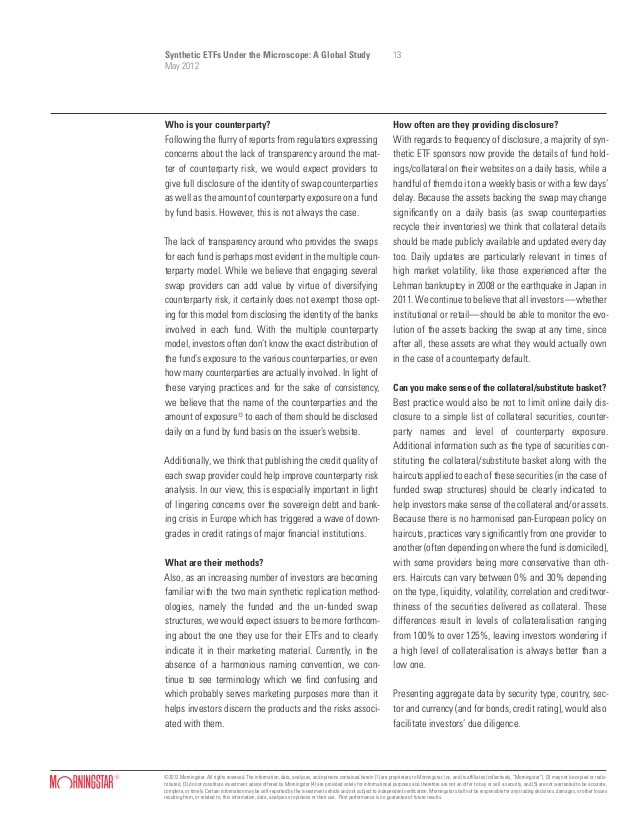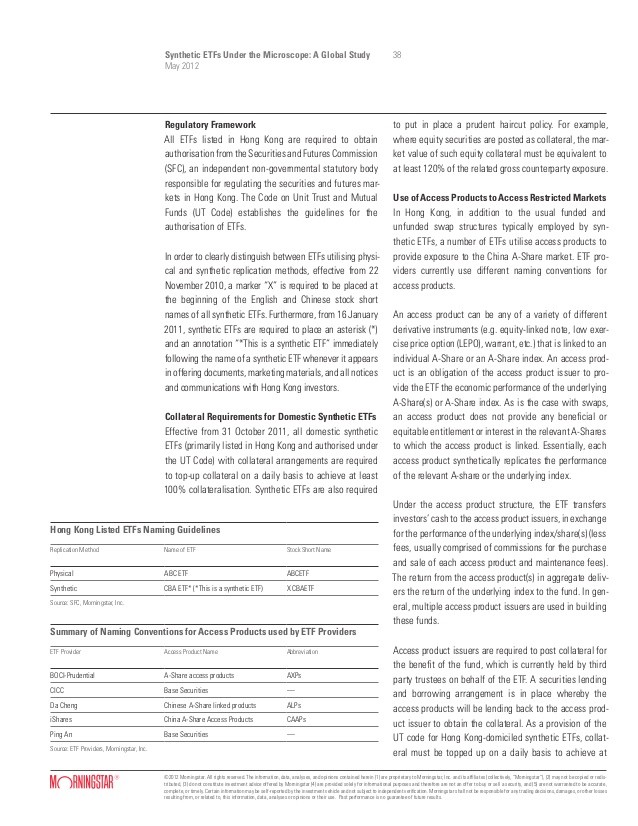Global Regulators Compete To Warn Of ETF Risks
Post on: 20 Май, 2015 No Comment

The FSB, the IMF and the BIS wave red flags over ETFs in separate publications released on consecutive days.
[This article first appeared on our sister site, IndexUniverse.eu .]
Launching a barrage of warnings, global financial policymakers at the International Monetary Fund (IMF) and the Bank for International Settlements (BIS) have followed the G20 Financial Stability Board (FSB) in raising concerns about the exchange-traded fund market.
Following Tuesday’s publication of a note on ETF market risks by the FSB, on Wednesday the IMF devoted six pages of its latest half-yearly Financial Stability Report to ETFs, focussing on “Mechanics And Risks”. On the same day the BIS released a working paper by Srichander Ramaswamy of its Monetary and Economic department, entitled “Market structures and systemic risks of Exchange-traded funds ”.
Following a brief description of the ETF market’s growth and of the mechanics of exchange-traded funds, the IMF stability report categorises five specific risks that it sees as inherent to ETFs: counterparty and mark-to-market risk for the ETF provider; leverage risk for investors; liquidity risk; market disruptions; and legal and policy risks.
In the section devoted to counterparty risks, the IMF highlights the credit risk to the swap provider to which an investor in those (mainly European) ETFs that use synthetic replication to track their benchmarks is exposed. While accepting that under Europe’s UCITS rules such credit risk is mitigated by the use of offsetting collateral, the IMF argues that “the gross exposures of these funds raise some concerns on whether current restrictions on derivative contracts are sufficient to curtail counterparty risks from becoming systemic under stressed market conditions”.
Where securities lending is undertaken by funds using physical replication to track their index benchmarks, the IMF notes that, while “regulation currently requires ETF providers to be able to recall securities lent at a short notice and to adequately collateralise such lending”, risks arise from the typical lack of transparency surrounding the securities lending activities undertaken by ETFs and since “cash reinvestment guidelines have not been clearly laid out by regulators.”

In the section called “liquidity risk”, the IMF points out that “while most ETFs are supported by one or more market-makers, there is no guarantee of active trading under illiquid conditions”, citing last May’s flash crash as an example of the risks to which exchange-traded funds are potentially exposed.
The IMF cites flows into commodity-tracking ETFs as a cause for concern, in particular that these inflows are “distorting prices away from fundamental factors”. The recent rise in the price of gold is given as an example of such an ETF-inspired trend. “A reversal of investor flows from other commodity-based funds could potentially increase volatility in the broader market and influence price action in related sector indices,” argues the IMF.
There are significant legal and policy risks associated with ETFs, particularly in regard to the use of derivatives and securities lending, says the IMF. If an ETF uses a fully funded swap (where the fund provider transfers investors’ cash to the swap counterparty, which in turn pledges collateral to the ETF’s account at the fund’s custodian bank), there is a risk that in the case of the failure of the counterparty the bankruptcy administrator could freeze the ETF’s assets, preventing it from liquidating them, says the IMF. In addition, the swap counterparty has an incentive to provide lower-quality collateral to the ETF, notes the IMF, leaving the provider with potentially illiquid assets to offload in the event of a counterparty default.
Finally, the IMF says, some ETFs have been designed to exploit dividend withholding tax-related arbitrage opportunities between two regional jurisdictions. These strategies have been a source of friction between local authorities and foreign investors, notes the IMF, leaving such funds exposed to sudden policy shifts aimed at closing the tax loopholes.














